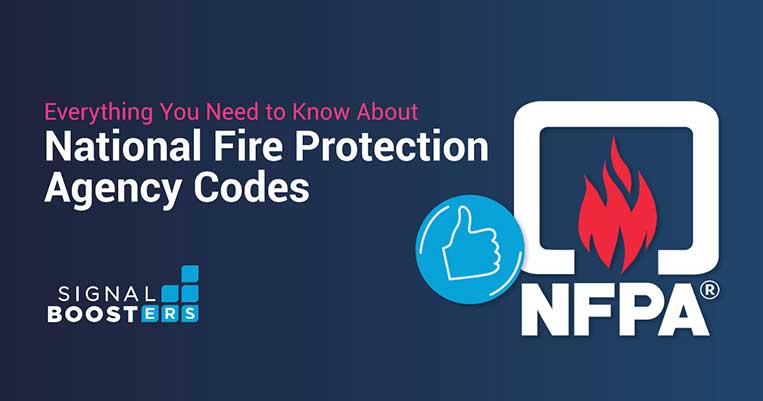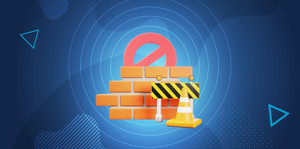What You Need to Know About Public Safety Radio NFPA Codes in 2020

NFPA Codes and What They Mean for Your Building
Public fire safety relies on the diligence of individuals, manufacturers, building owners, architects, and government officials. If not handled properly, many situations can become hazards. The National Fire Protection Agency (NFPA) is the organization that sets standards for anything that can catch on fire. From buildings to food trucks to wildlands, there are standards on how equipment (and the environ-ments around them) should be installed, maintained, and protected so they do not cause a fire hazard.
Who Is The NFPA?
Formed in 1896, the founders noticed that sprinklers were being installed in buildings, but none of them were created the same. Thus, some were safer to operate than others. A group of people decided that there should be standards that outlined how the systems were built, installed, and maintained. Since those early days, the NFPA has expanded its reach into all industries, adapting standards to new technologies and innovations.
The mission is to develop and publish fire protection codes and standards that all businesses must follow. The intent of the codes is to set safety guidelines and minimize fire risk and effects.
The NFPA consists of representatives from many industries, including insurance, business and industry, trade associations, government, health care facilities, safety equipment manufacturers, distributors, fire services, architects, and engineers. There are volunteer committees comprised of consumers, laborers, installers, authorities, research specialists, users, manufacturers, and insurance adjusters.
How Are The Codes Adopted?
There are approximately 300 codes and standards. All standards are revised every 3-5 years, and there is a four-step process that takes 2 years from idea to adoption.
- In the public input phase, anyone can go onto the website and submit a proposal to develop a new standard
- Then the standards and placed on the website or published in a newsletter and the public is encouraged to make comments
- All projects are then reviewed by a standards council at technical meetings. This council will determine whether the project meets all the requirements set for consideration, and has enough information, and they will send it through the process. If so, the project is assigned to a committee where they will develop the standards
- The standards council then discusses and approves the standards for publication
Specific standards are viewable online with an account, but they are read only. Standards are available for purchase and that funds the organization.
What Do The Standards Cover?
Anything that has something that could catch on fire is covered. There is even a standard for wildland fire management and food trucks. There are electrical codes, gas standards, standards for ovens, parking structures, health care facilities, and more.
Here are some interesting examples:
- NFPA 160 - Standard for the Use of Flame Effects Before an Audience
- NFPA 267 - Standard Method of Test for Fire Characteristics of Mattresses and Bedding Assemblies Exposed to Flaming Ignition Sources
- NFPA 701 - Standard Methods of Fire Tests for Flame Propagation of Textiles and Films
- NFPA 909 - Code for the Protection of Cultural Resource Properties – Museums, Libraries, and Places of Worship
- NFPA 1123 - Code for Fireworks Display
NFPA 72 provides standards related to the installation, performance, and maintenance of fire detection systems, emergency communications and mass notification systems.
Buildings are required to have ways for emergency responders to communicate inside and outside of buildings. Buildings which fail to meet their local requirements can be denied a Certificate of Occupancy. The public safety DAS (Distributed Antenna System) has these requirements:
- NFPA requires 99% coverage in all areas that are critical and 90% coverage in all other areas
- Equipment must be housed in NEMA-4 compliant enclosures. These keep radio equipment protected from wind, dust, and water
- A minimum signal strength of -95 dBm is required
- Safety radio systems must have battery backup that lasts 24 hours. Specific systems can require a real-time monitoring system as well as a failure alarm system
- The Antenna isolation must be 15 dB higher than the gain of the amplifier
- Cables connecting public safety electronic equipment and the room they are housed in must be fire-safe for 2 hours
- Customizable frequency adjustment to ensure compliance with future public safety requirements
Any type of building must adhere to these codes, including shopping malls, hotels, multi-story buildings, parking garages, elevators, and more. A thorough inspection of in-building radio signal must be conducted to ensure compliance. Installing a DAS with amplifiers and boosters. is a way to ensure compliance with these rules, and will be required of any building that fails an inspection.
SignalBoosters.com provides complete building inspection and public safety DAS installation services to ensure compliance will all NFPA 72 derived codes nationwide.
Who Enforces NFPA Codes?
The AHJ or authority having jurisdiction, which is usually the fire marshal, is responsible for enforcing any NFPA codes. It is important to note that codes are not enforced uniformly in all locations. Some are stricter than others. Insurance companies may dictate requirements that go beyond these levels as well. They may have different rules and regulations depending on where you are. If you don’t follow the standards, you may not be covered.
Safety First
The NFPA’s mission is to educate and keep property and individuals safe. Their education division includes Sparky the Dog, a dalmatian that has been around for the last 50 years and serves to help children understand fire safety. Following NFPA guidelines are strongly recommended. For all the standards, check out www.nfpa.org. Chances are there is a standard for your situation.
Contact Us
We’re here to assist with any issues you might be experiencing with poor cell service. Contact us today, or call us at 1-800-470-6777.
Interested in Learning More? Check Out Our Cellular Info Hub / WiFi Info Hub





